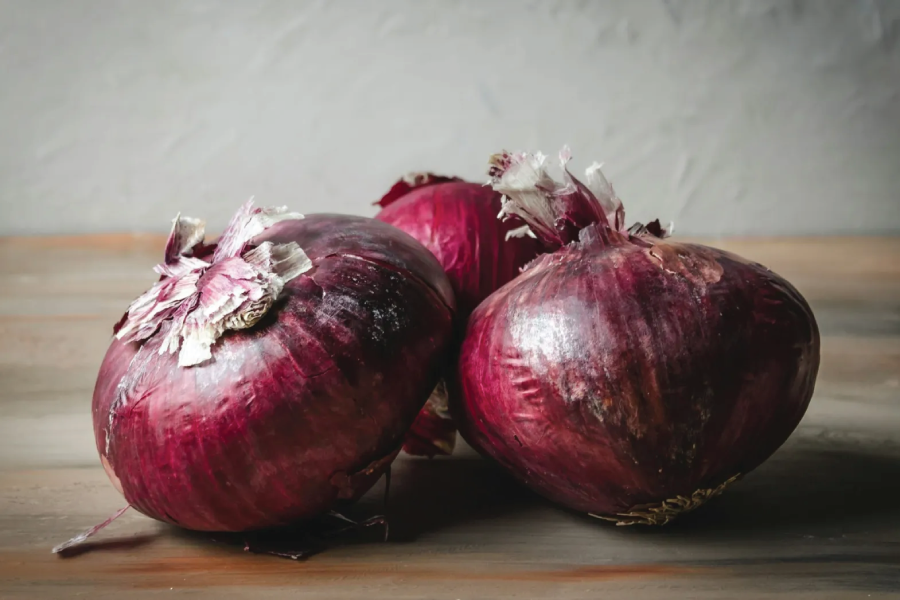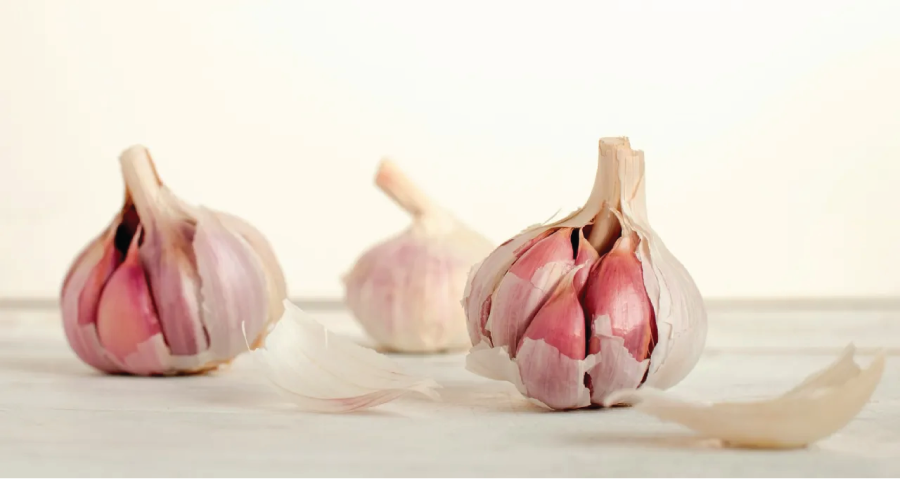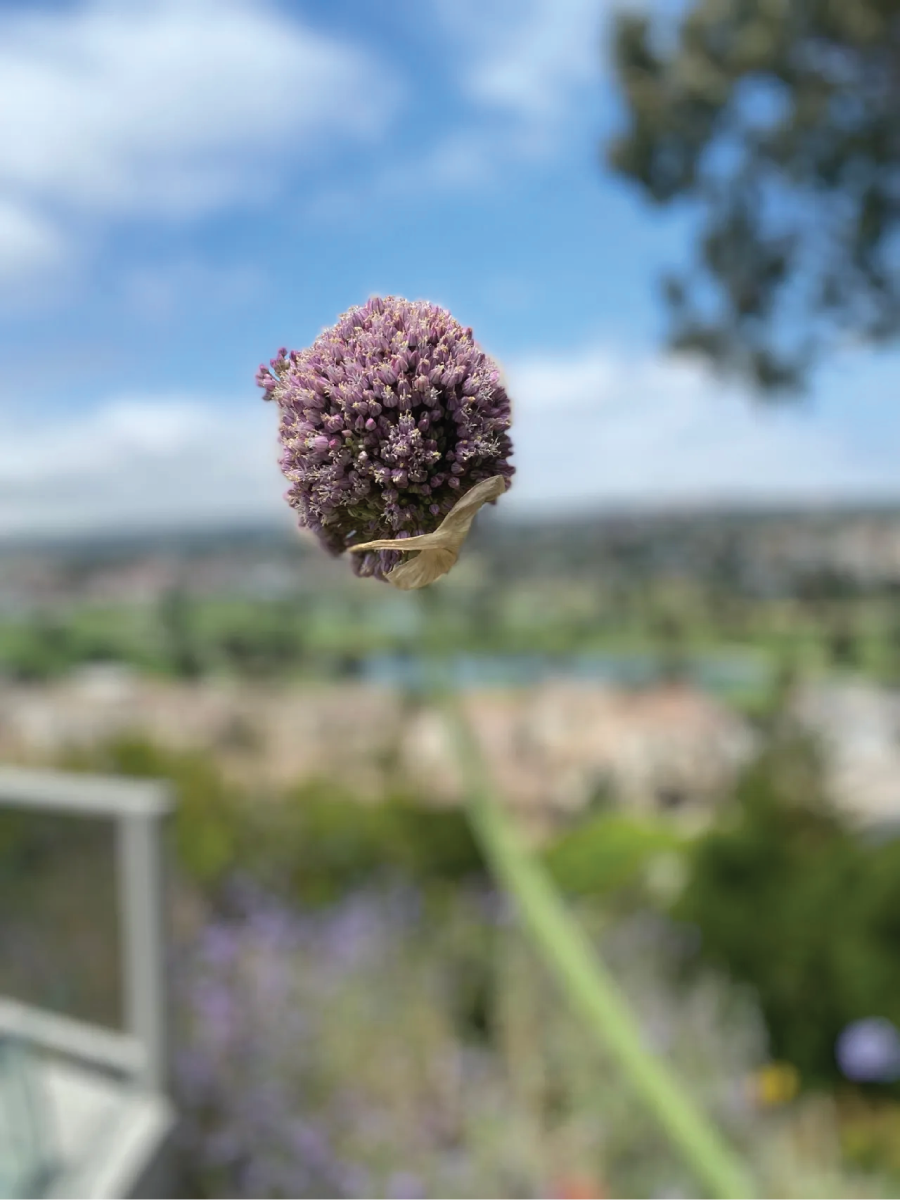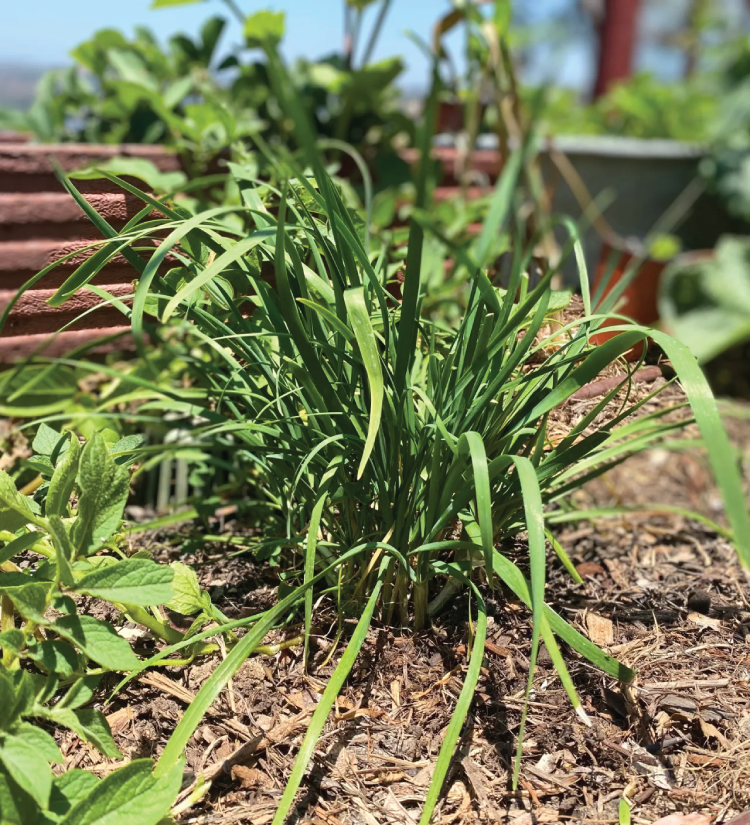How to grow garlic, onions, leeks and chives — the Allium genus

Recently harvested and cured red onions. (Quin Engle / Unsplash.com)
By Jodi Bay
(This article originally appeared in the August 10th edition of the San Diego Union-Tribune)
Like humans who have similar traits to our relatives, so does the plant genus, Allium, part of the Amaryllidaceae family. The Allium genus is made up of edibles (onion, garlic, leeks, chives) and ornamentals (ornamental onions), which have different appearances, uses and growing conditions but have similar traits.
Plants in the Allium genus are monocots (plants whose seeds have only one cotyledon, or seed leaf), with long thin leaves, spherical flower clusters called “racemes,” and that store nourishment in a swollen underground bulb. The Allium genus is native to Central Asia and their characteristic flavor comes from the enzyme alliinase. Each plant has a distinctive onionlike aroma.
Growing each of the Allium edible genus plants is different, yet similar. All edible plants in the Allium genus are cool-season vegetables that prefer to be planted in loose, well-draining soil. Allow enough space between plants for air circulation to reduce fungal pathogens.

Garlic head showing the cloves. In San Diego, plant cloves in the fall for spring harvest. (Mike Kenneally / Unsplash.com)
Garlic
Garlic is best planted from cloves, not seed. There are two types of garlic: Softneck (Allium sativum sativum) and Hardneck (Allium sativum ophioscorodon). Softneck is the primary type of garlic grown commercially in California. It is propagated from garlic cloves that can be planted beginning in October through November in San Diego County. This type of garlic does not bolt and can be stored for a longer length of time. Hardneck garlic is distinguished by a rigid stalk called a “scape.” It grows best in colder climates and produces smaller cloves.
Both types of garlic are dependent on “day length,” i.e., the number of hours of light in a day, for bulb formation. Bulb creation begins in spring as the daylight increases. Planting garlic cloves in the fall enables the plant to grow a strong root system, which drives growth of many leaves in the spring, which results in a larger bulb.
Onions
Onions (Allium cepa) can be started from seed, sets or transplants. Like garlic, onion development is dependent upon day length. Unlike garlic, they are biennial, taking up to two years to form an edible bulb. In San Diego, select short-day varieties that require 12 to 14 hours of daily sun. The long-day varieties that require 14 to 16 hours of daily sun may result in leaf growth but no bulb development.
Plant short-day varieties of onions inland from October to December; at the coast, plant between October and November. Intermediate-day varieties are also an option for San Diego, and those seeds and transplants do best if planted between February and mid-March.

The flower of the Allium genus is called a ‘racemes’ and is identified by a spherical group of flowers equidistant from the center on a long stem. (Jodi Bay)
A cousin to the onion is the shallot (Allium cepa gr. Aggregatum). Growing conditions are similar to onions. Shallots grow in clusters, so separate into individual bulbs when planting.
Harvest garlic, onion and shallots when the tops bend to the ground and become dry. All need curing (drying) after harvesting. Tie with a string and hang in a dry warm (70 degree to 75 degree) room with good air circulation for a minimum of two weeks. Additionally, garlic and onions can be affected by a number of pest and pathogens. Refer to bit.ly/PestControlOnionGarlic for information on specific pests.
Leeks
Leeks (Allium ampelotrasum) are another biennial member of the Allium genus. Unlike onions and garlic, the stem (actually bundled leaf sheaths) is the edible part. Leeks can be grown from seed or transplants and do well with a spring planting for early varieties and a fall planting for late varieties.
An important consideration for successfully growing leeks is location and blanching. Leeks grow better in a sunny location in loose soil. Blanching is a method of covering the white “stem” of the plant with soil as it grows. This is called “hilling.” To keep it edible, continue to cover the stem as it grows to ensure that the white part is not exposed to the sun.
Leeks need cold weather to thrive. Verify if the leek variety is an early maturing (plant in January or February, harvest in spring) or late maturing (plant in August, harvest in winter) variety.
Fungal diseases such as downy mildew and purple blotch can affect leeks in wet weather. Space leeks at least six inches apart to ensure adequate air flow. Thrips are a potential leek pest that will feed by sucking fluids out of the plant. Spinosad, an organic insecticide, can help to control thrips.

Chives are an herb used in cooking and part of the Allium genus. (Jodi Bay)
Chives
A completely different member of the Allium genus are chives (Allium schoenoprasum). Chives are an herb with an onion flavor and are grown for their edible leaves and flowers. The leaves grow from an underground bulb and can be started from seed, transplants or cuttings. They grow well in containers or in a garden border. Keep in full sun and plant in well-draining soil. Harvest as needed when leaves are 6 inches tall to use in salads, soups and other dishes.
Aphids are the main pest for chives. Use a strong stream of water to remove aphids, hand-pick or remove infected leaves.
Add some flavor and aroma to your garden and meals by planting members of the Allium genus.
Bay has been a Master Gardener since 2012. She is past chair of the tool care committee, and an instructor in the Beginning Vegetable Gardening workshops, which teach new gardeners how to grow healthy and bountiful vegetables.

